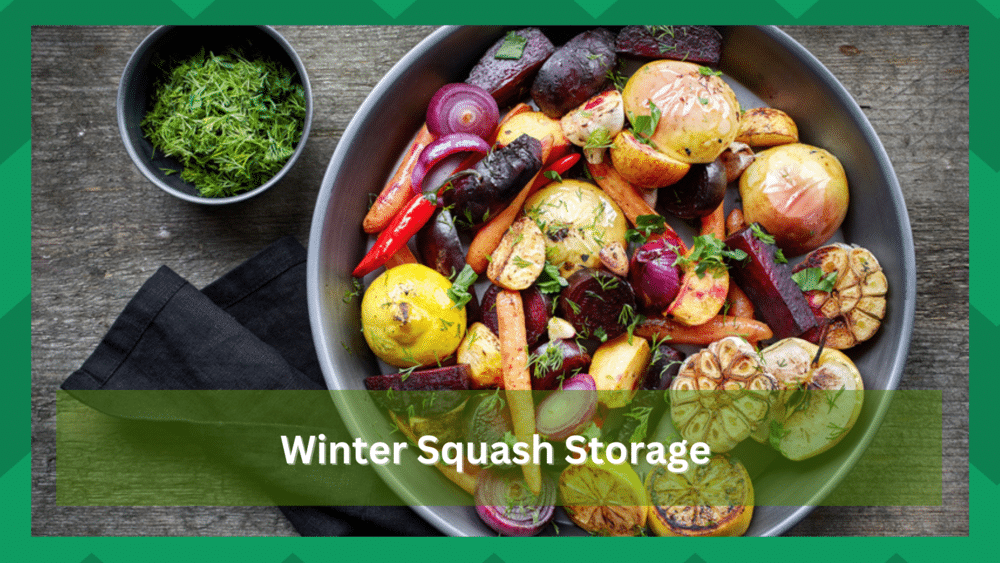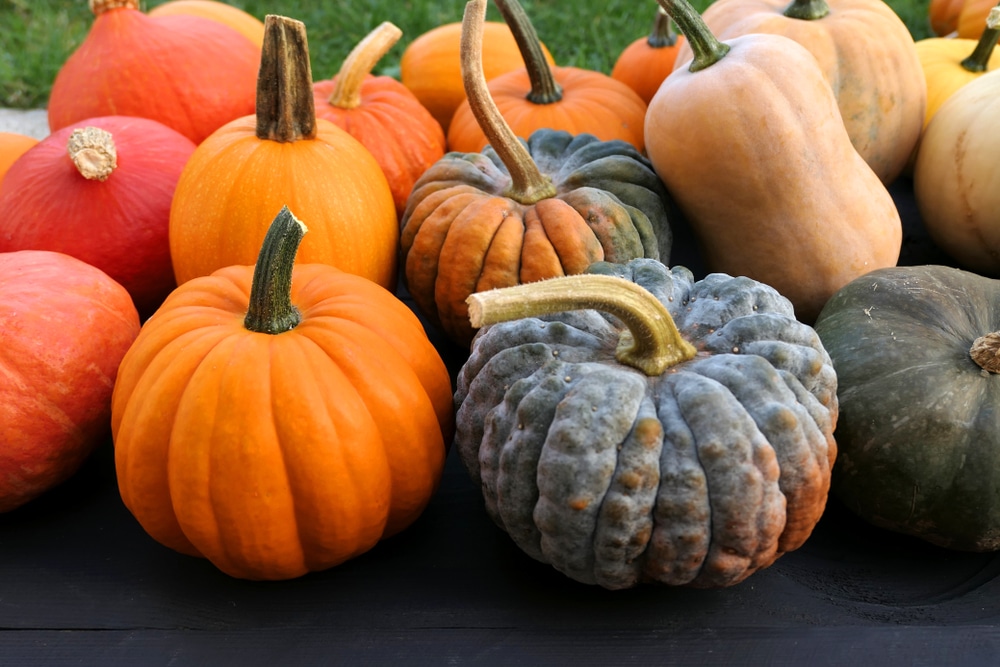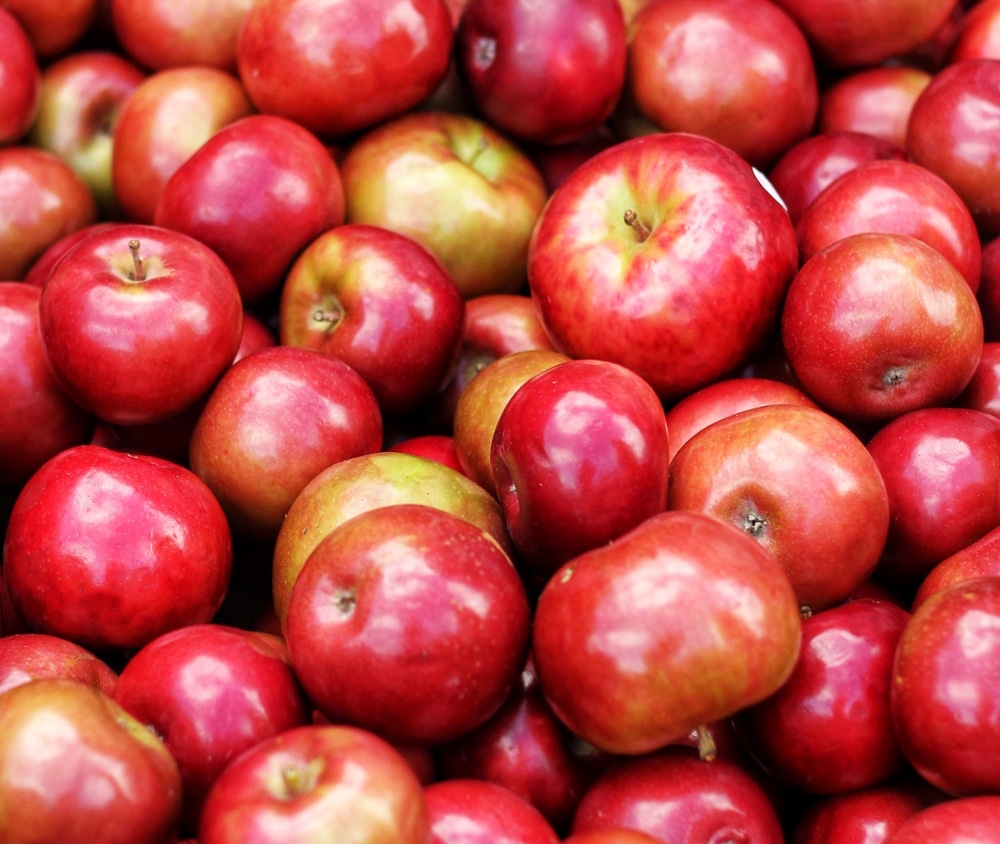
Winter Squash is relatively easy to manage for beginner gardeners. Usually, it doesn’t rely on constant care; these plants can form a dense canopy over the garden. The only tricky part is starting the plants and encouraging their growth in a new environment.
Other than that, these plants don’t cause much hassle, and you only have to harvest them once per cycle. Last but not least, the winter squash has an incredible storage capacity, and you can store them for several months.
Many people are confused about how they manage winter squash storage. Let’s go briefly over this topic to give you a better understanding. That way, you can enjoy the harvest well into winter.
Learning More About Winter Squash Storage
Even though people prefer to freeze or can their winter squash, leaving them on a rack in your basement is perfectly viable. The main thing that you need to look towards is keeping the temperature low.
Make sure to give them enough room to breathe. That means the winter squash should not be stacked on top of each other, and there should be sufficient space between them.
This is why some people like using steel wire racks with air coming in from the bottom and the top.
Ideally, you’re looking for a space with little sunlight available. That will improve the storage capacity of your winter squash, and you’ll be able to stretch out a few more months from this plant.
One thing to keep in mind is that humidity can affect the storing ability of your winter squash.
If the environmental conditions are not viable in your storage room, you may need to include a dehumidifier or change the storage room. That way, you won’t have to worry about your winter squash going bad.
There shouldn’t be much problem if the environmental conditions are appropriate and you’re storing the squash in a cool, dry place.
You can take these out at any time to cook them. Make sure to avoid using wooden racks and spread them out evenly.
However, if you are looking for maximum storage time, it would be best to freeze them.
Following these steps will help you keep the squash stored for several months. If you harvest the winter squash in the fall, it will surely last you for several months until spring.
Despite the name, winter squash, they mature in the summer, and you can easily store them over the winter.
It would help if you allowed the harvest to grow ideally and then removed them for storage. The color of the stem and the skin will make it easier for you to determine whether or not your squash is ready to be harvested.
If the squash is green and bright, it is better to leave it for a few more weeks. Make sure only to gather them when the skin is tough. Otherwise, it would help if you left them alone for a few more weeks.
After the harvest, you should let them cure for a few days before storing them in your basement or garage.
Remember to leave the stem on the fruit for maximum storage ability. Once the harvest has cured, you can layer them out in a cool and dry place, and you’ll be able to enjoy winter squash over the next few months.
What to avoid when storing winter squash?
When storing winter squash, there are some important things to consider to keep your squash fresh and safe to eat. The most important tips for storing winter squash are to keep it dry, cool, and well-ventilated.
Avoid Direct Sunlight: Exposure to direct sunlight can cause the skin of winter squash to over-ripen and become soft. This can reduce the shelf life of your squash, so it is important to avoid storing squash in direct sunlight.
Avoid Storing in Plastic: When left inside a plastic or airtight container, winter squash can quickly become moldy due to its high moisture content. It is best to store winter squash in a breathable container, such as a cardboard box or wicker basket.
Avoid Areas with High Humidity: Storing winter squash in an area that is too humid can cause the skin to become soft and wrinkle quickly. It is best to store winter squash in an area with good air circulation and low humidity levels.
Avoid Freezing Squash: Freezing winter squash can cause it to become waterlogged, making it mushy and unappetizing. If you are looking to store your winter squash for a long period, it is best to leave it at room temperature in a cool, dry place.
Avoid Storing in Hot Areas: Winter squash should not be stored in an area that is too hot, such as near a stove or fireplace. The heat can cause the skin to over-ripen, making it unsuitable for storage.
Avoid Washing Before Storage: Winter squash should never be washed before storing because this can speed up spoilage. Washing should always be done just before cooking or eating the squash.
Avoid Storing Near Apples: Apples emit a gas called ethylene that can cause other fruits and vegetables stored nearby to over-ripen quickly, so it is best to avoid storing winter squash near apples.
Avoid Eating Damaged Squash: If the skin of a winter squash is damaged, it should not be eaten, as this can cause food-borne illness. Damaged squash should be discarded immediately.
Avoid Storing for Too Long: Winter squash can last up to 3 months when stored correctly in a cool, dry place. However, if kept for too long, the squash can become moldy and unfit for consumption.
By following these tips, you can ensure that your winter squash is fresh and safe to eat when it is time to prepare a delicious meal.
Signs that Winter Squash has gone rotten in storage?
Winter squash is a seasonal vegetable that can be stored for several months in cool, dry conditions. It has thick, hard skin and a sweet flavor when cooked.
However, winter squash can become rotten if not stored properly or left too long.
Knowing the signs of rotten squash can help you avoid eating spoiled produce and prevent food-borne illness.
Appearance:
The most obvious signs of a rotten winter squash are changes in its appearance. The skin may start to look dull and wrinkled or have blemishes or dark spots on the surface. If you see any of these signs, discard the squash immediately.
Smell:
The scent of rotten winter squash is unmistakable. Once the softening process begins, the squash will emit a sour or pungent smell. If you notice this smell, it’s best to discard the produce right away.
Texture:
If you pick up winter squash and find it’s soft and mushy, it’s past its prime. This is another sign of spoilage if the squash is still firm but feels spongy when you touch it.
In some cases, you may also find liquid seeping out of the squash. This is a definite sign that it has gone bad and should not be consumed.
Mold:
If you notice any white, black, or green patches on the squash’s skin, it has started to grow mold and is no longer safe to eat. Mold can be dangerous if ingested, so discard the product immediately if you see any signs of it.
It’s important to practice proper winter squash storage techniques to prevent spoilage. Store it in a cool, dry place and check it regularly for signs of rot.
Always discard any product that has changed in appearance, smell, or texture, as this indicates that it’s no longer safe to eat.
Remember that rotten winter squash can cause food-borne illnesses, so it’s necessary to take all safety precautions when handling and storing the produce.
By following these tips, you can enjoy winter squash for several months without any worries of spoilage.
To Conclude
Winter squash is easy to store. Placing them in a cool and dry place should do the trick. It would help if you made the environmental conditions favorable to prolong the storage capacity.
Keeping the winter squash for five to six months in your basement or garage will be easy after everything has been dealt with.
There should be little to no light, and you can also use a dehumidifier if the storage space is not dry.
Ensure to attach the stem during the harvest. Also, ensure you have completely let the squash cure for a few days after harvest.
Once it is cured, you can put them on your rack. You can also cook them whenever you want over the next few months.
That should help you manage the winter squash storage. You also won’t have to waste any of the squash because of its long shelf life.



